I still remember my very first power bank. It was 2013, candy-bar-shaped, weighed as much as a short novel, and charged my battered Nokia once—just once—before tapping out. Fast-forward twelve years, and the brick in my backpack now juices my laptop, phone, earbuds, and smartwatch in one lazy afternoon café session, all while staying cooler than my iced Americano. Wild, right? So how exactly did we get here, and what fresh tricks are the latest packs learning in 2025? Pull up a chair (or plug in—pun entirely intended) and let’s geek out together.

Editor
Lloyd Kelly Miralles chevron_right
Table of Contents
From Slow Sippers to High-Speed Guzzlers

Have you ever watched a kettle boil on an old electric stove? That’s how charging felt a decade ago. Early power banks crawled along at 5 W—roughly the power draw of a single LED bulb. In 2025, the conversation’s shifted to USB Power Delivery 3.1 and its headline-grabbing 240-watt ceiling.
- Then: One measly USB-A port dribbling power.
- Now: Multi-port, bidirectional USB-C hubs that can fast-charge a 16-inch laptop and then reverse roles to recharge themselves from the same cable.
I had a moment of pure sci-fi joy last week: my 140 W GaN pack snapped to 80 % in thirty-five minutes from a wall charger, then turned around and fed my MacBook like it was passing a hotcake across the breakfast table. Remember when we used to juggle bulky laptop chargers in coffee shops? Good riddance.
GaN, SiC, and the Shrinking Act

If you cracked open an old power bank (guilty), you’d find silicon switches the size of your pinky nail, radiating heat like a space heater. Enter gallium nitride (GaN) and its edgier cousin, silicon carbide (SiC)—semiconductor materials that handle higher voltages with smaller footprints and less heat.
Picture trading in a rusty jeepney for a sleek electric scooter: same job, but lighter, cooler, and faster. GaN has turned stodgy bricks into pocket-size slabs no thicker than a deck of cards, while SiC is creeping into ultra-high-capacity, laptop-grade banks for people who practically live off-grid (hello, digital nomads of Siargao).
Solid-State Hype Meets Reality
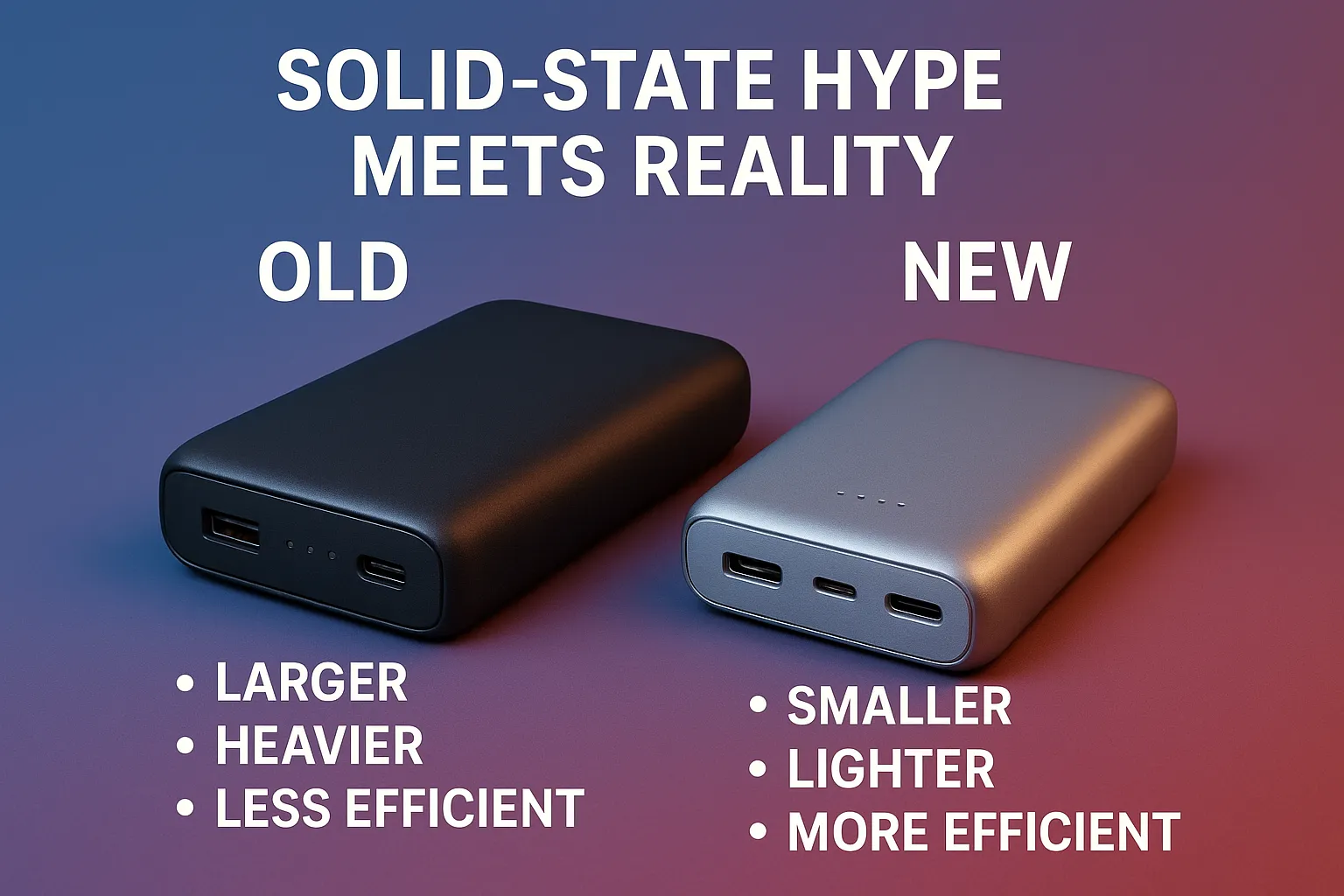
You’ve heard the whispers: solid-state batteries promise higher energy density and lower fire risk by swapping flammable liquid electrolytes for solid ceramics or polymers.
- Early 2024: Niche brands teased prototypes with dazzling safety demos—stabbing batteries with nails, dunking them in water, you name it.Mid-2025: We’re finally seeing production models in the wild. They’re pricey—think flagship-smartphone-pricey—but boast 30 % more capacity in the same volume and shed the “kaboom” reputation lithium-ion still can’t shake entirely.
I borrowed a solid-state pack for a weekend hike in Benguet. In five-degree misty mornings, it barely flinched, whereas my friend’s regular lithium pack sulked and lost voltage faster than our willpower on the final climb.
Qi2 and the Magnetic Moment
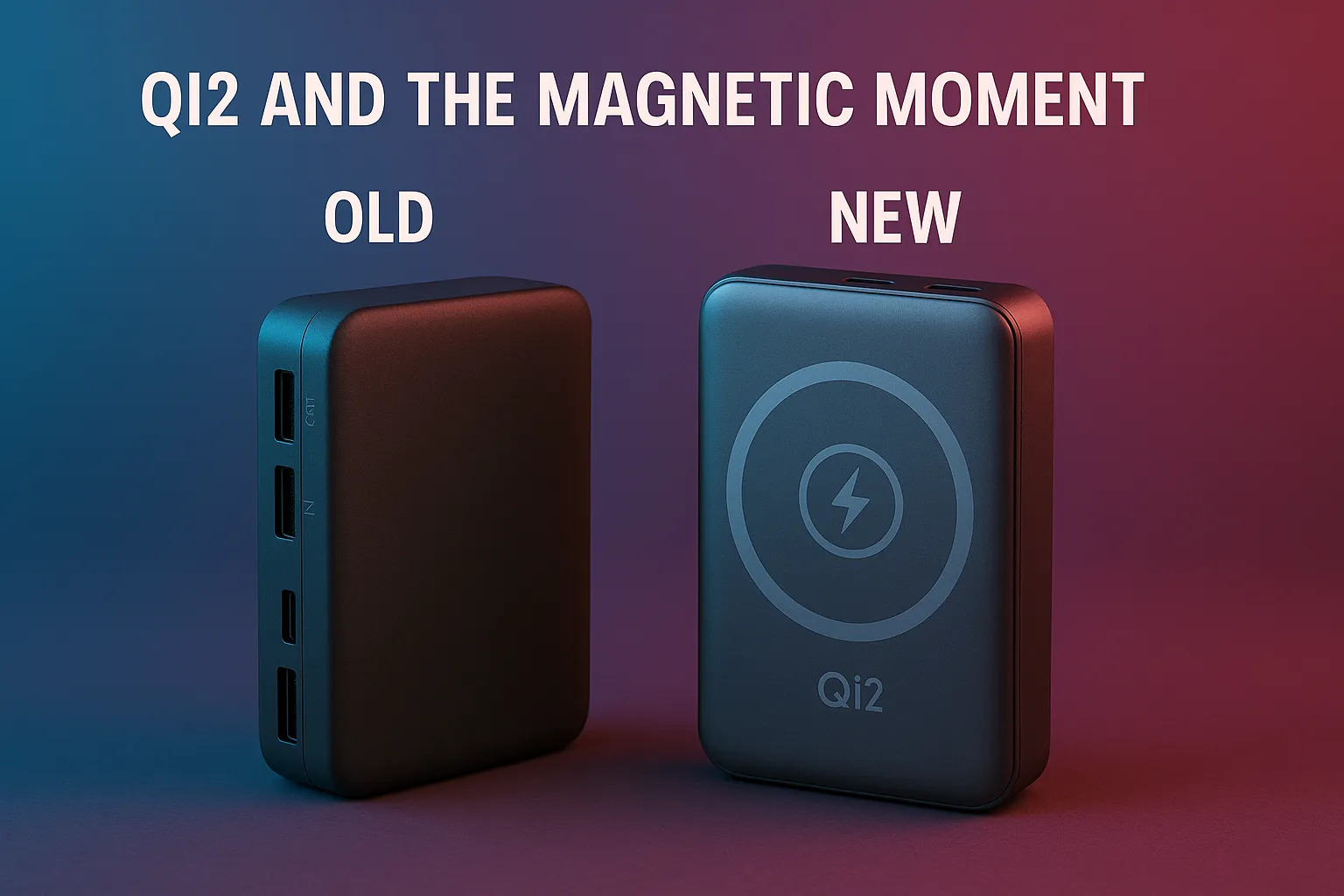
Remember fumbling in the dark, trying to cram a cable in the right way? Qi2 (yes, “chee two”) takes Apple’s MagSafe idea and hands it to everyone. Magnets click phone and pack together in perfect alignment, making 15 W wireless the new baseline instead of a slow consolation prize.
This year’s Android flagships—Galaxy S25, Pixel 10, Xiaomi Flip—embraced Qi2 like it’s the next dance craze. I’ve ditched cables on commutes; the pack snaps on, pockets snug, and I can doom-scroll in rush hour without tangling wires. Bonus: no more lint-clogged ports.
AI-Smarts: Charging With a Brain

The phrase “smart power bank” used to mean an LED that turned red when the juice ran low. In 2025, we’ve got packs running on-device machine-learning chips.
- Dynamic Power Allocation: The bank measures each device’s battery health, temperature, and preferred charging curve, then doles out current in real time, like a barista customizing drinks.
- Usage Analytics: A tiny e-ink screen pops up stats (“17 cycles this week, average draw 42 W, estimated health 96 %”).
- Predictive Refill Alerts: Mine pings my phone every Thursday morning: “You’ll be traveling tomorrow—top me up to avoid brownout blues.” Creepy or convenient? I’ll take the convenience.
Sustainability Steps Up
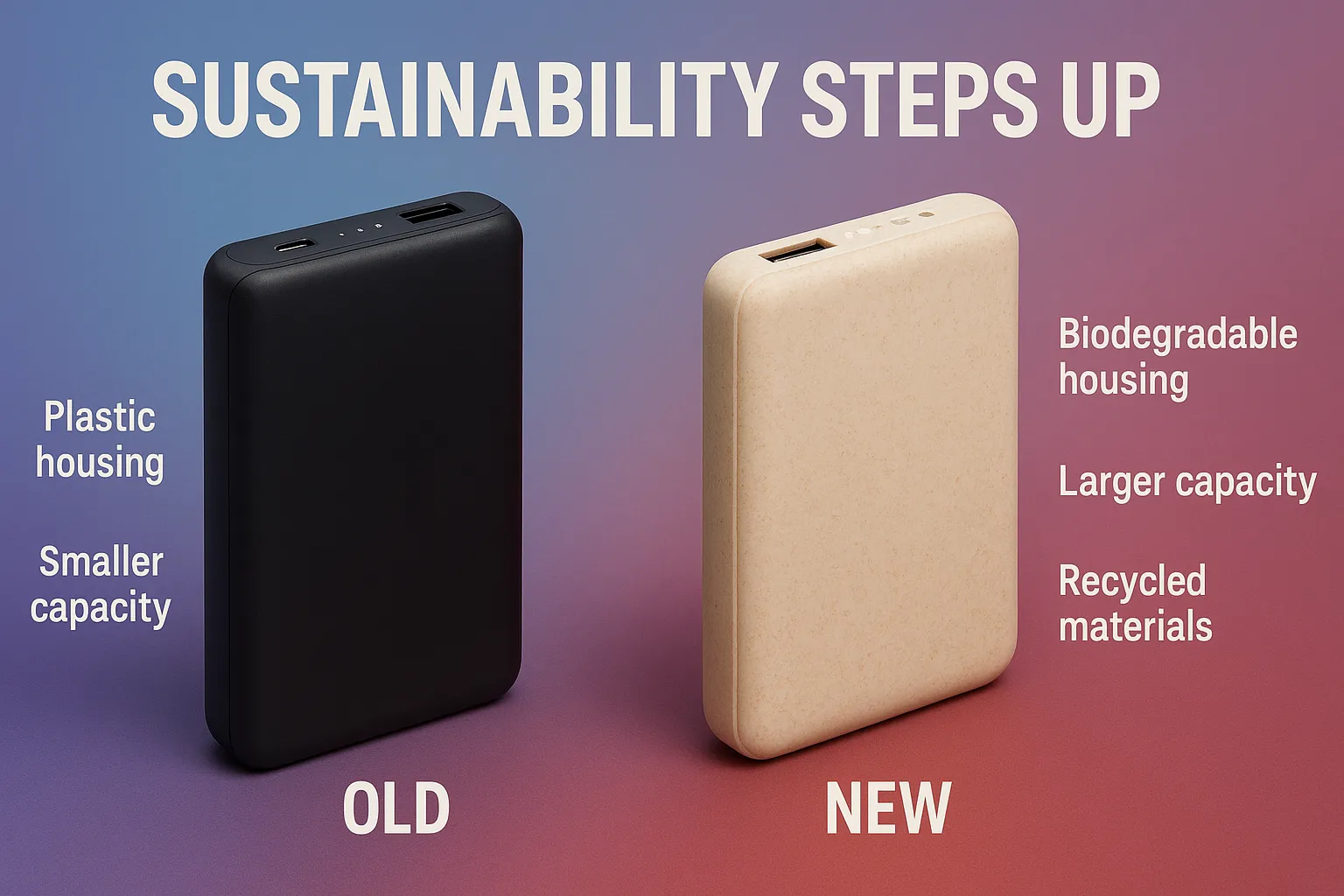
Here’s a plot twist: 2025 power banks aren’t just about bigger numbers; they’re about making smaller footprints on the planet.
- Recycled Aluminum Shells: Brands tout casings forged from melted beverage cans.
- Modular Cells: Instead of tossing the whole pack when capacity dips, you pop out cartridges and snap in new ones—LEGO-style.
- Take-Back Programs: Drop-boxes have sprouted in malls across Metro Manila; trade in an old clunker, get credits toward a fresh, greener model.
I swapped my aging 2019 unit last month. Watching the clerk slot its cells into a recycling tray felt oddly cathartic—like KonMari for gadgets.
Solar and Kinetic Wildcards
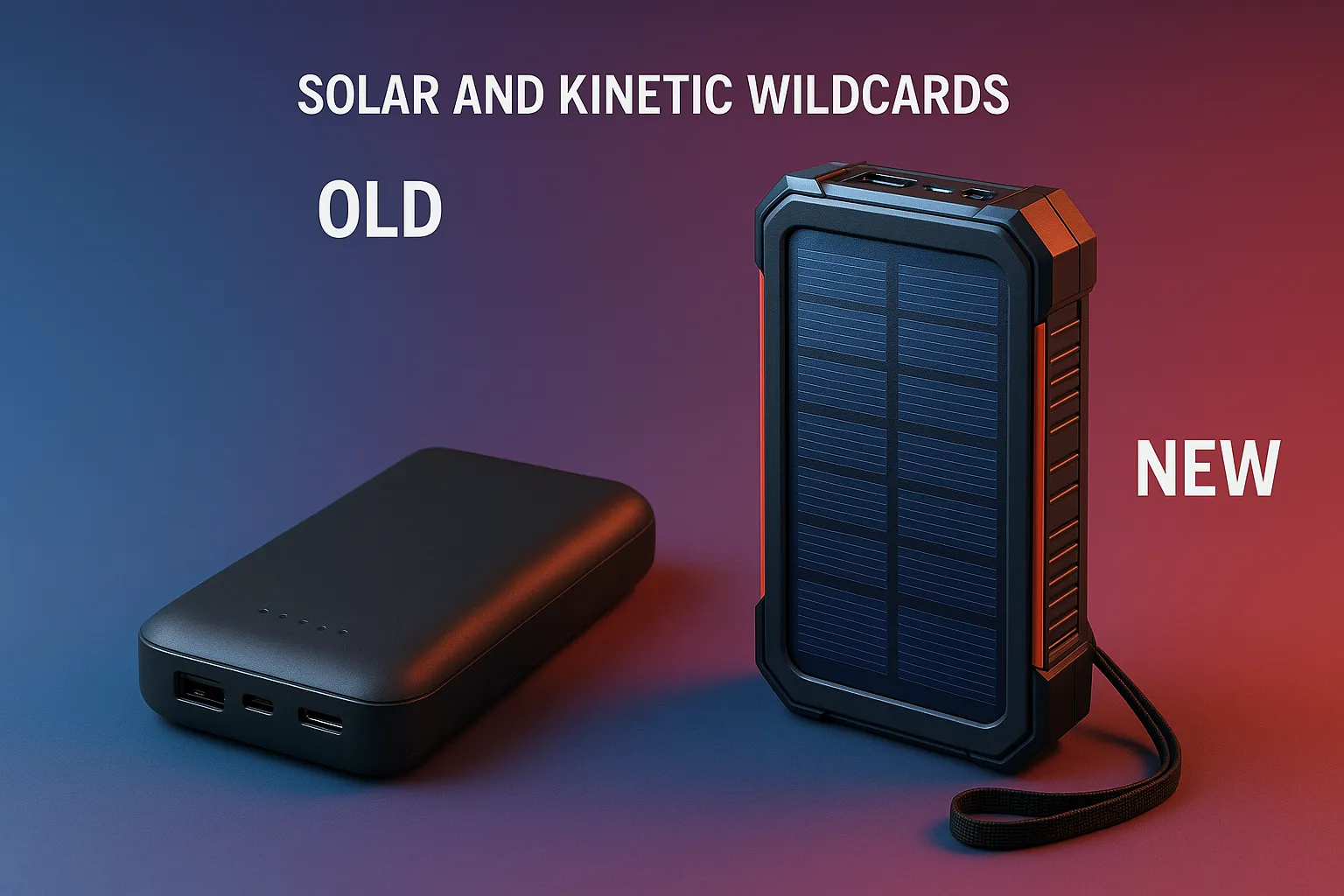
Solar power banks aren’t new, but their monocrystalline panels finally pack respectable efficiency. Leave one on a hostel window sill in El Nido, and it’ll regain enough charge to keep your phone alive for sunset photos.
Even cooler? Kinetic harvesters—think miniature dynamo bars—convert your walking motion into trickle charge. I clipped a prototype to my backpack during a 10 km fun run. Did it top up my phone? Not even close. Did it keep my fitness tracker alive through the after-party? Absolutely, and that’s a promising start.
Stack Charging & Daisy-Chaining
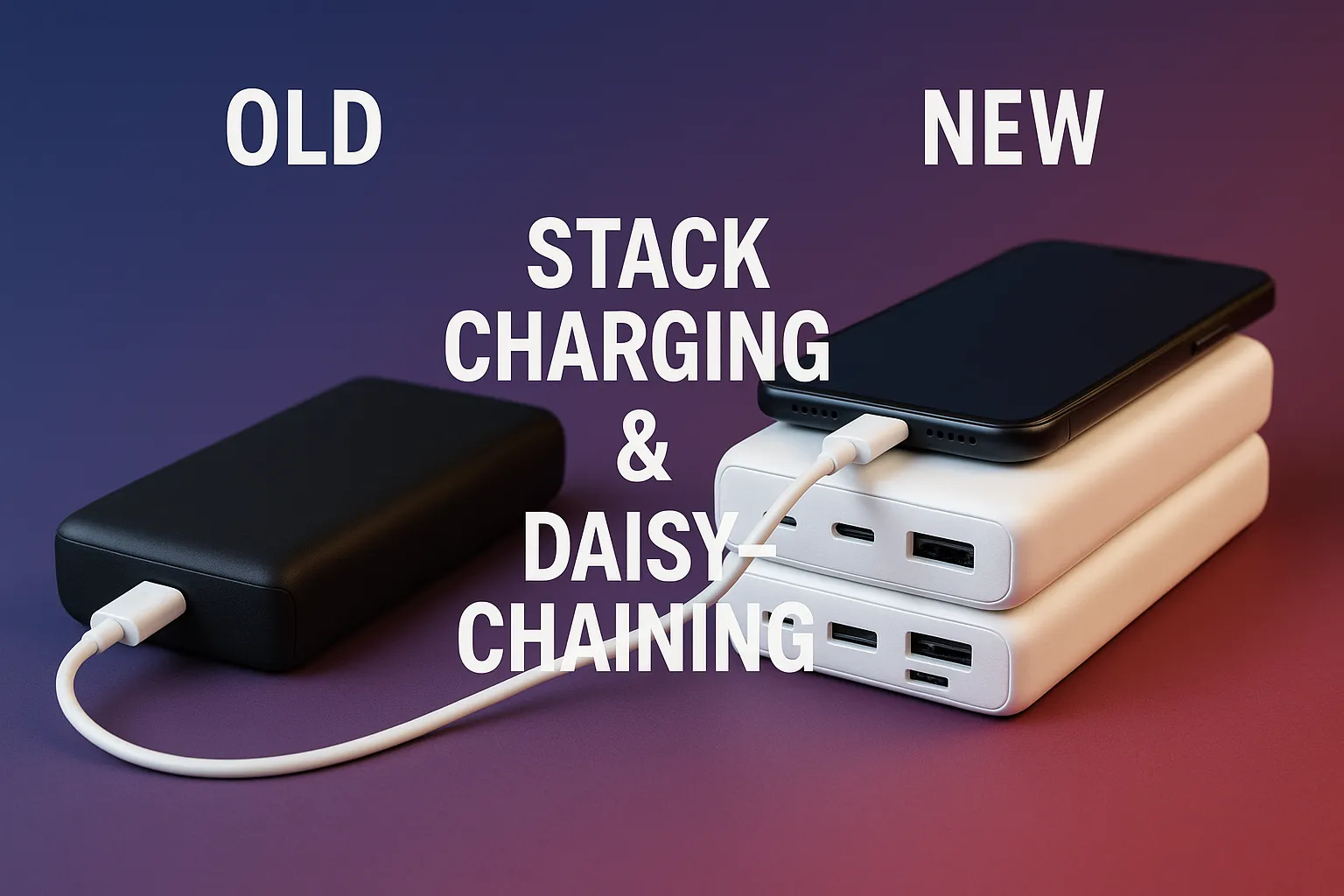
Remember leapfrogging extension cords at family reunions? Stack charging fixes that. You chain two, three, even four Qi2-enabled power banks like magnetic pancakes. They share one wall plug, topping each other off in a neat, cable-free tower. Pop the stack apart, hand each cousin a slice, and no one fights over sockets.
Daisy-chaining goes wired: USB-C in one end, out the other—pass-through charging perfected. I’ve run my laptop off a wall adaptor while simultaneously filling the bank sandwiched between. It’s the tech equivalent of refuelling a plane mid-air.
Safety Systems Level Up
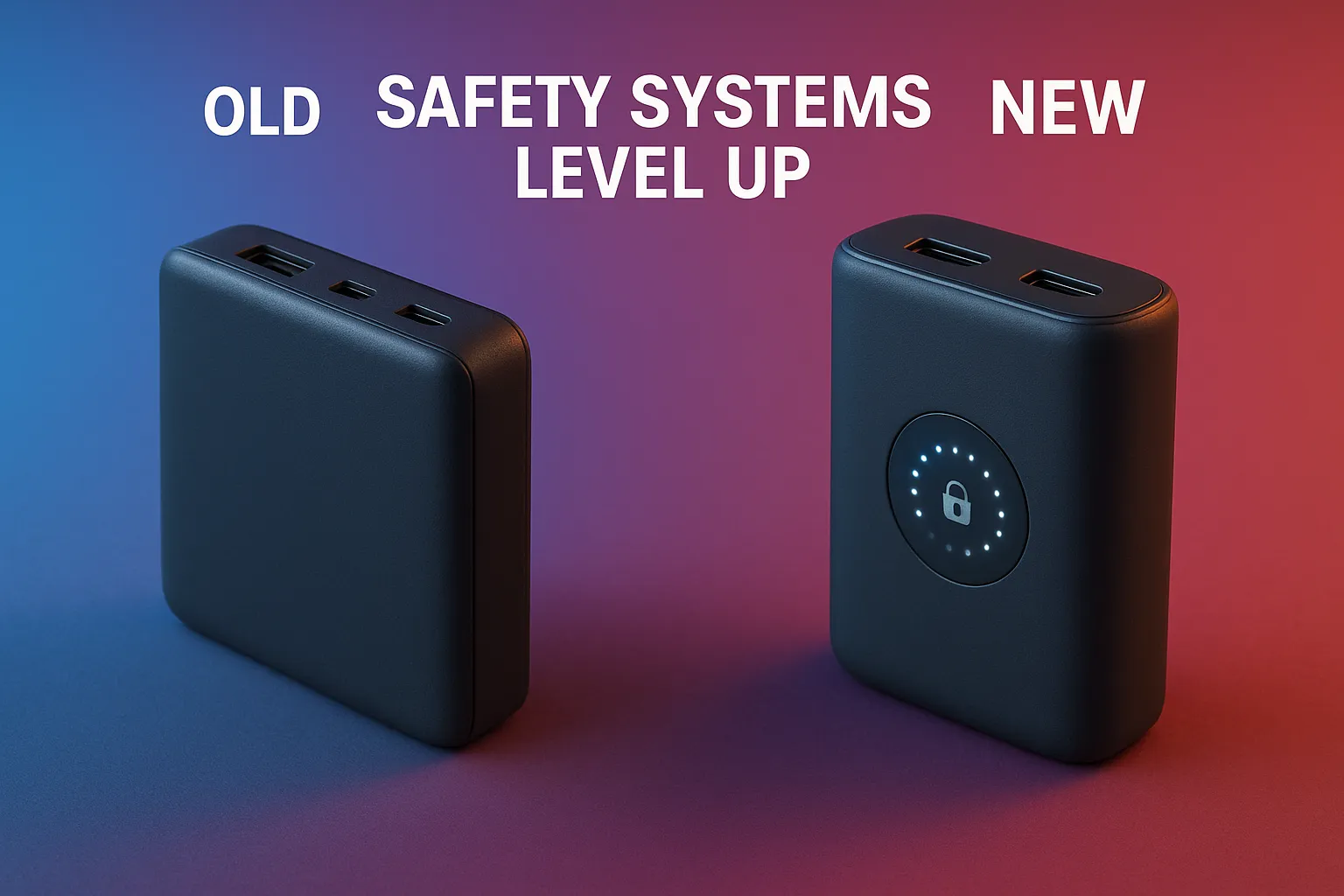
With great power (banks) comes great… well, you know. Modern packs guard against thermal runaway with multi-layer graphite sheets, on-board fire-retardant foam, and self-healing fuses that reconnect once a short clears.
They also speak a common language—USB-IF Battery Safety v2.0—so when a phone says, “Whoa, slow down, I’m hot,” the bank listens instantly instead of barging ahead. My Qi2 pack actually paused charging in a steamy, airless karaoke bar last month, flashing a polite “Cooling…” message. Ten minutes later, it resumed, crisis averted, karaoke massacre uninterrupted.
Power Bank + Hub Hybrids
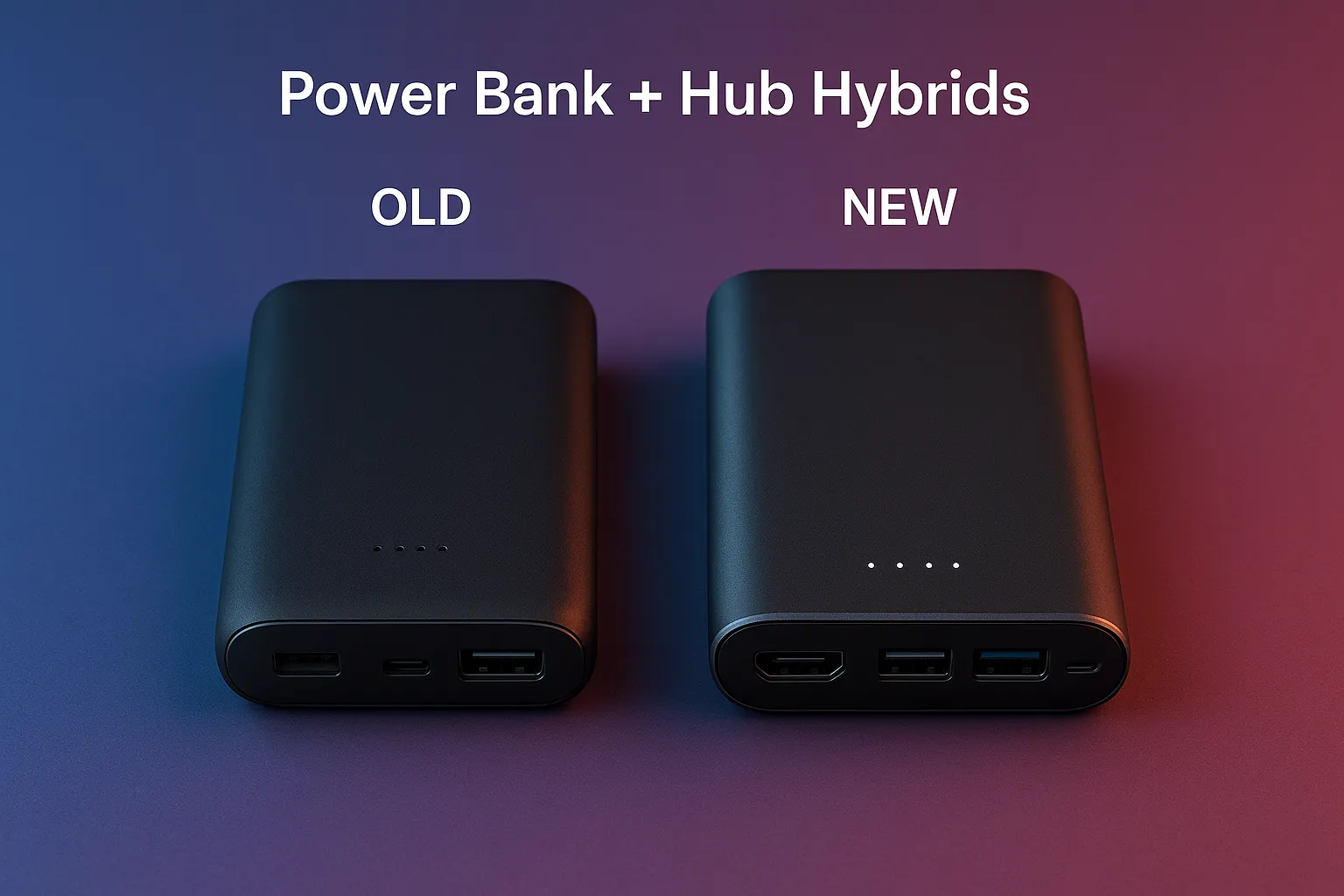
Why lug a separate dongle when your battery can double as a USB-C hub? 2025 hybrids sport HDMI, Ethernet, SD-card slots, and triple USB-A ports—in a chassis still small enough for your sling bag. Perfect for digital nomads hot-desking around BGC: one slab on the café table, and you’ve got power, display output, and file transfer sorted.
I’m writing this very article through such a hub-bank combo, beaming my laptop feed to a second monitor while sipping calamansi soda. One cable, zero fuss. Future, you taste zesty.
The Rise of Everyday Giants
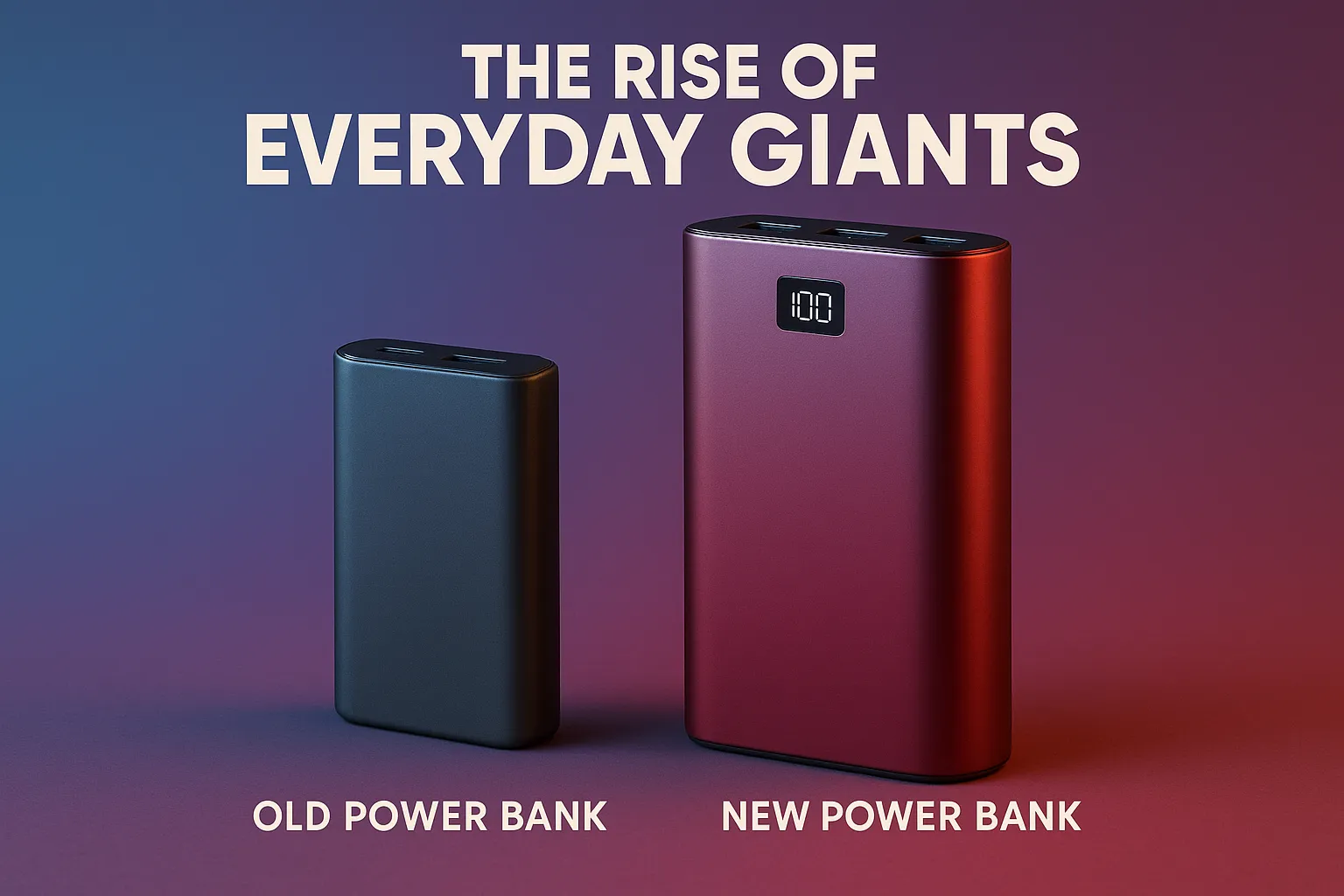
Not too long ago, 10,000 mAh sounded beefy. In 2025, that’s the new “small.” 20,000–30,000 mAh packs are the daily-driver sweet spot, thanks to denser cells and slimmer enclosures. For road-warriors, 60,000 mAh “desk-chargers” replace uninterruptible power supplies, keeping modems and mini-PCs humming through brownouts—an all-too-real scenario during our scorching dry seasons.
I lent one to a neighbor during a rolling blackout last April; it sustained her Wi-Fi router, two phones, and a rechargeable fan for four hours. We watched the rest of the neighborhood drift into digital silence while sipping halo-halo by LED lantern glow.
Haptics & Personality
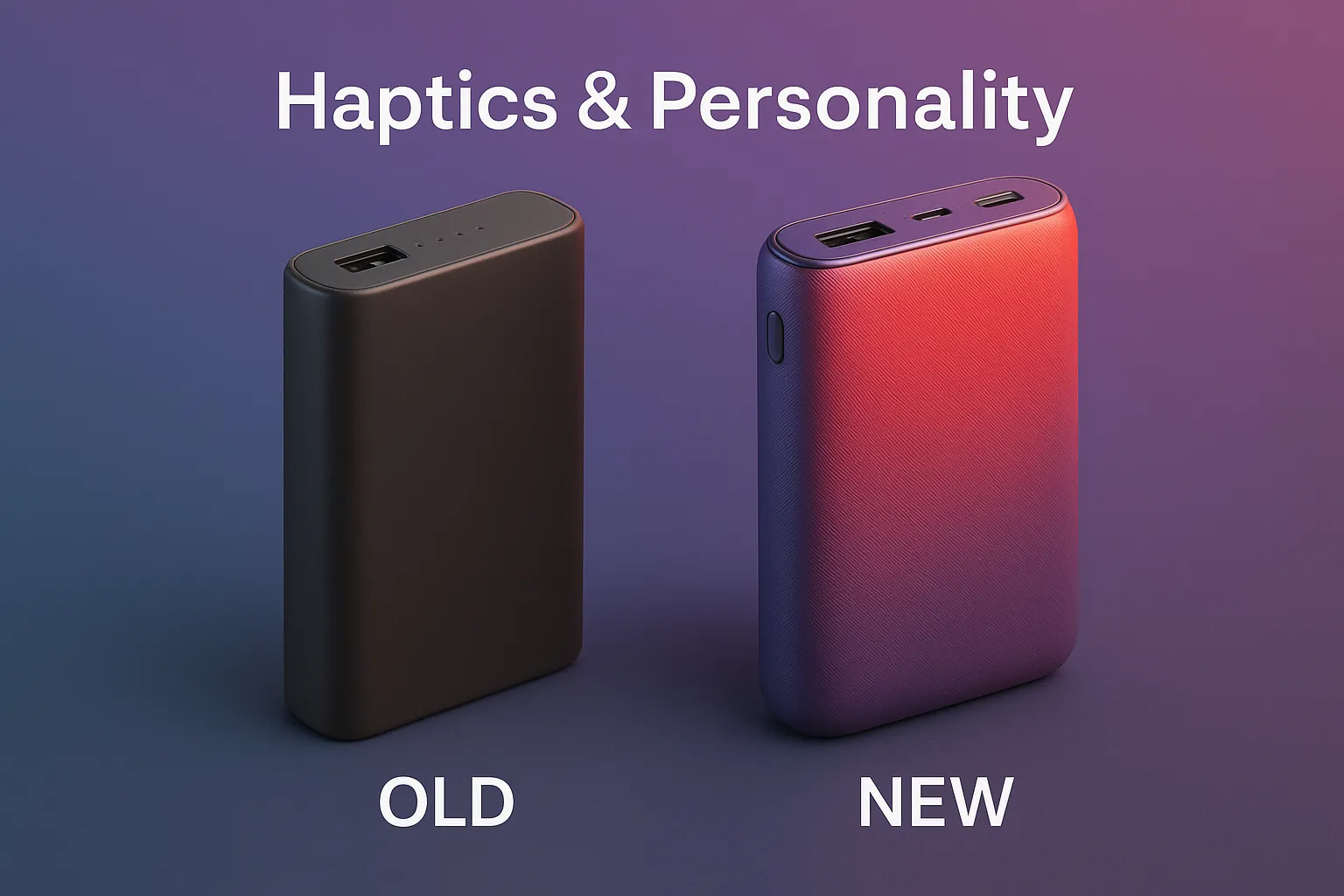
Yes, somebody decided even batteries need personality. Some 2025 packs vibrate lightly to confirm proper alignment, change shell color with temperature (mood-ring nostalgia, anyone?), or greet you with pixel-art smileys on tiny OLED dots. Do we need it? Of course not. Does it spark joy? Absolutely.
I gifted my teenage nephew a neon-lime pack that flashes an 8-bit thumbs-up each time he hits 100 %. He calls it “Blinky” and treats it like a digital pet. If fun keeps people mindful about battery health, I’m all for the gimmick.
A Quick Timeline for Context Lovers
|
Year |
Milestone |
|
2012 |
First mainstream 5,000 mAh banks hit Philippine shelves. |
|
2017 |
Qualcomm Quick Charge 3.0 and USB-C begin their slow takeover. |
|
2020 |
100 W power delivery debuts; travel-safe size still hefty. |
|
2023 |
GaN supply stabilizes, shrinking chargers by 40 %. |
|
2024 |
Qi2 spec finalizes; magnets everywhere! |
|
2025 |
Solid-state retail units, 240 W PD, AI charging, modular eco-designs. |
Conclusion
We’ve sprinted from snail-slow, single-port bricks to AI-savvy, laptop-feeding, environmentally considerate marvels—all in little over a decade. Standing in 2025, the biggest challenge might be choosing what bells and whistles fit your life:
- Commuter? Look for Qi2 snap-and-go slim packs.
- Gamer or creative pro? A 140 W GaN beast with active cooling vents.
- Eco-warrior? Modular cells and recycled aluminum shells.
- Weekend hiker? Solid-state or solar-boosted packs that shrug off cold and drops.
Whatever you pick, remember the core truth: a power bank is more than emergency juice now—it’s an extension of our digital identities.
